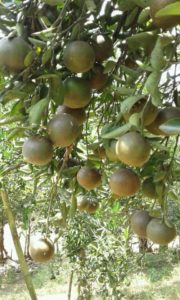Plants really need light because it has important role in the process of photosynthesis. Without enough light, your plants won’t produce enough food for themselves. Moreover, light also affects growth and development in plants.
Generally, light prevents growth in plants because it decomposes and destroys auxin hormone that is crucial for growth. However, the intensity of light that is received by plants should always be controlled, not too much, not too little. Excess light can destroy auxin hormone and also chlorophyll because in chlorophyll, there are many metabolism reactions that need enzymes that can be destroyed or denaturated because of high temperature (usually over 46 degree celcius). On the other hand, lack of light can cause your plants to etiolate.

Etiolation is when your plants grow super fast in dark or shaded area with very minimum light. Characteristics of plants that experience etiolation are as shown below:
- Weak and thin stems
- Tall, thin stems
- Fast stem elongation
- Imperfect leaves development due to lack of chlorophyll
- Pale, unhealthy looking plants
Plants also have different responses to different length of sun light exposure. This ability is called photoperiodism. These responses can range from seed dormancy, germination, bloom, to development of roots and stems. These responses are controlled by phytochromes, a pigment that is responsible to absorb light.
Based on how light intensity affects them, plants can be classified under:
- Long daylighted plants, which are plants that bloom under 12 hours or more light exposure per day, such as wheat, spinach, and potato.
- Short daylighted plants, which are plants that bloom under less than 12 hours light exposure per day, such as dahlia, yam, and daisy.
- Neutral daylighted plants, which are plants with their blooming process that doesn’t depend on light exposure, such as tomato, rose, and sunflower.
